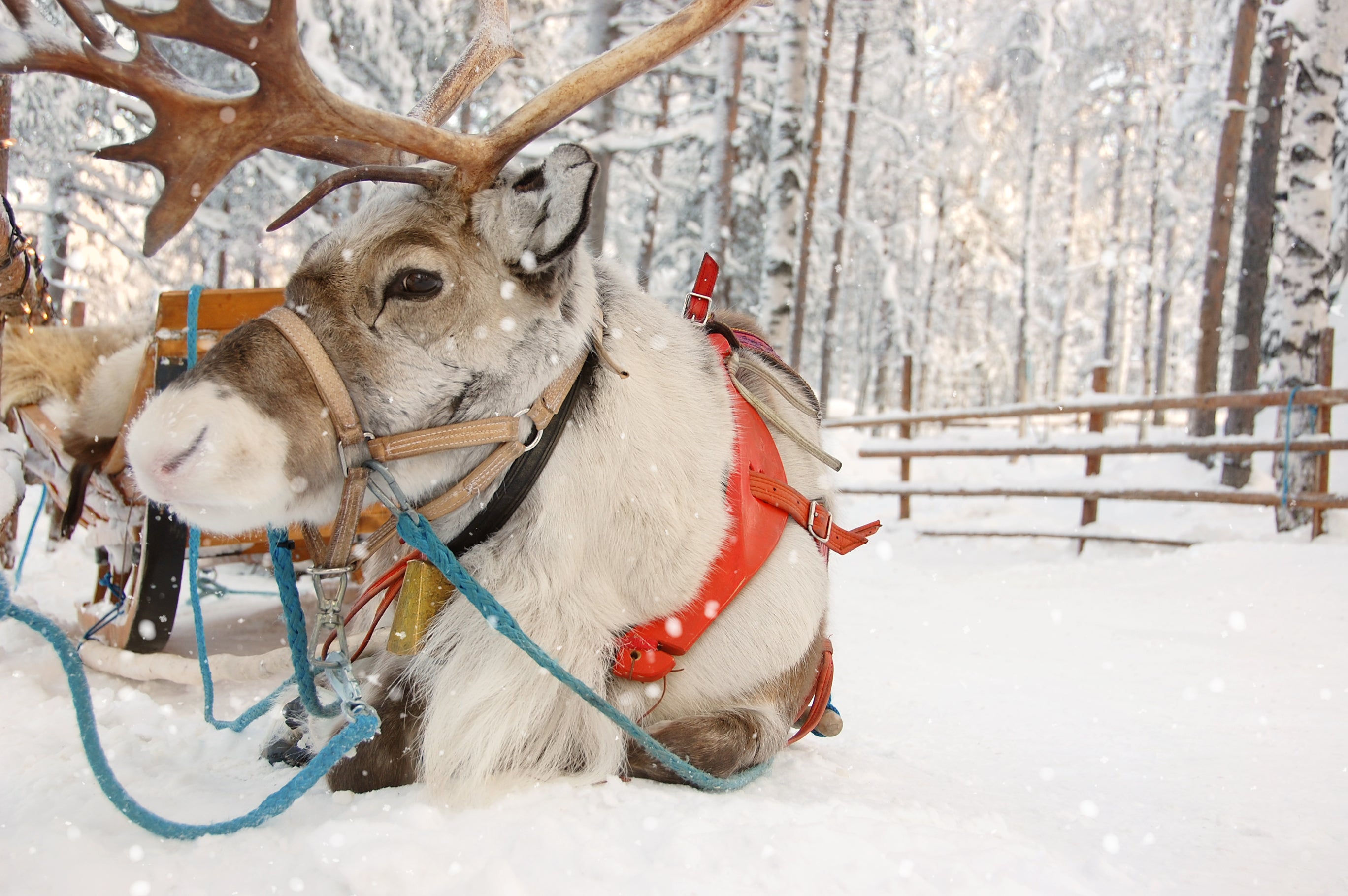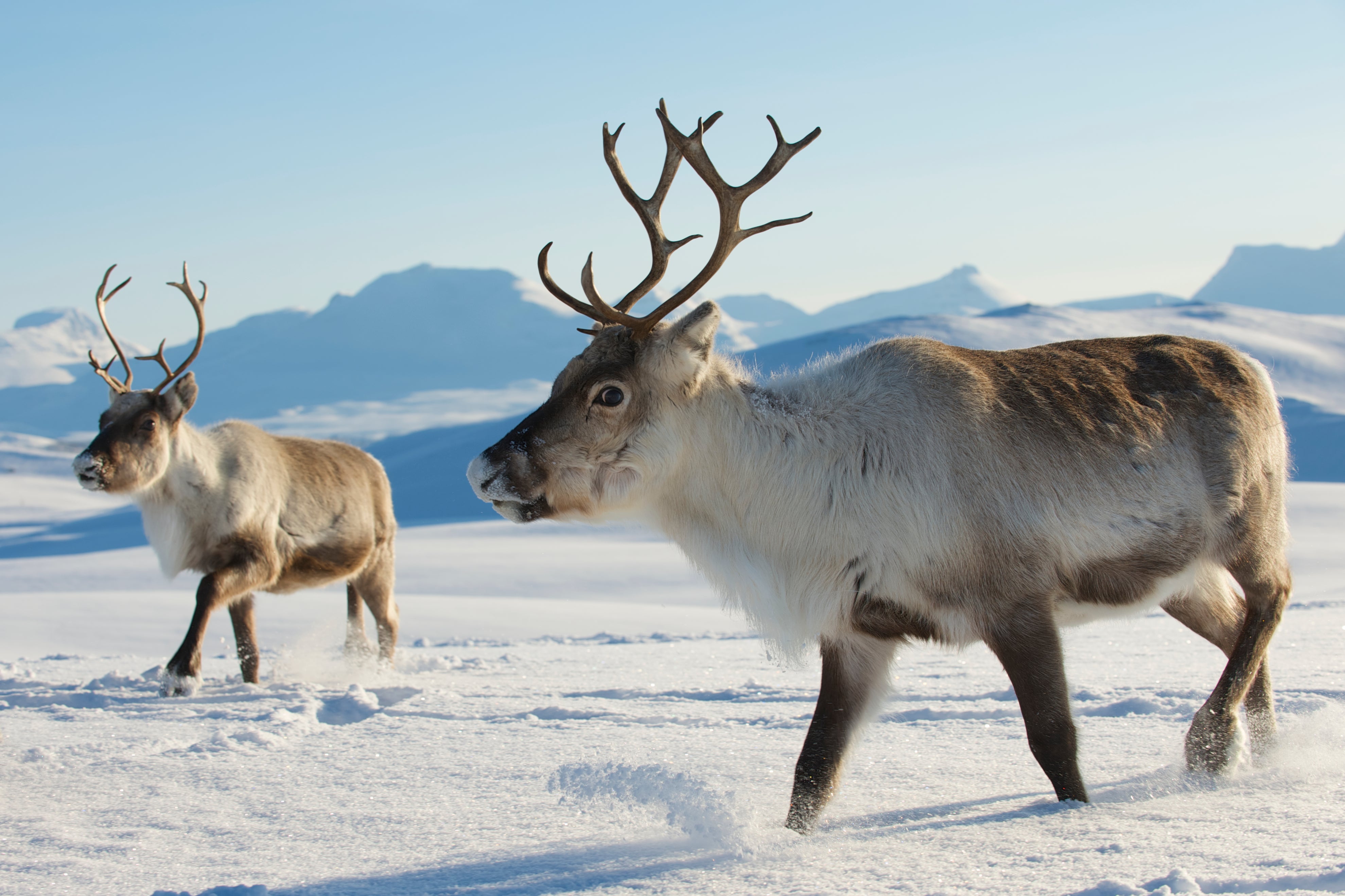Why reindeer are perfect to pull Santa’s sleigh
They might not be able to fly, but there are many other good evolutionary reasons Santa chose reindeer to pull his sleigh, writes Louise Gentle

We all know that Father Christmas would struggle to deliver presents to everyone around the world without the help of his magical reindeer. But why were they chosen to pull the sleigh rather than any other animal?
It turns out that the biology of reindeer makes them ideal for the job. Here are five reasons why.
Warmth
Reindeer live in the Arctic, where temperatures on long winter nights often plummet below -30C. Unlike most mammals, which only have one layer of fur, reindeer have two: a dense underfur beneath a blanket of hollow guard hairs. Reindeer can have up to 2,000 hairs packed into a single square centimetre, making it ten times as dense as human hair. This double layer traps air and creates a cover of insulation that keeps reindeer from losing heat, and stops snow from reaching and cooling the skin. This enables reindeer to keep warm, whether living with Santa at the North Pole or travelling around the world on Christmas Eve.
In addition, when blood reaches our extremities, like our fingers and toes, it cools and our hearts must pump at a faster rate to warm the blood up again. This requires a lot of energy which we get from food, something that is often lacking in Arctic landscapes – well, unless you count feasting on candy canes and sugar plums with the elves.
But reindeer possess something called a counter-current heat exchange, which essentially allows them to recycle heat so that the heart doesn’t need to work as hard. The arteries and veins carrying blood to and from the heart are intertwined, allowing heat from warm arterial blood to pass to the cold venous blood. A lot of this heat exchange happens in the specialised nasal bones of the reindeer, where plenty of cold air is inhaled through the nostrils. In fact, the highly concentrated blood vessels in their nostrils often give reindeer a red nose, just like Rudolph.
Fitness
Reindeer lichen – an organism that is formed from a symbiotic relationship between algae and fungi – is the main thing reindeer eat during the winter. Lichens are the crusty looking things that you often see living on tree trunks and rocks.
Reindeer are the only domesticated species of deer, and people have been using them to get around since the stone age
Lichens are plentiful in the Arctic – an ideal food source that reindeer can find wherever they go. This means reindeer don’t need to store body fat and, unlike many other animals, they can find enough food to power their epic sleigh journey with Santa – helped along by the carrots people leave out, of course.
Reindeer are actually the only mammals capable of digesting lichen, thanks to specialised bacteria in their gut.
Sight
The Arctic has very little daylight during the winter, so reindeer have evolved to see as much as possible in the dark. Reindeer eyes change colour from gold to blue in the winter, letting in more of the small amount of light available and improving their vision.
Reindeer can even see in the ultraviolet. Although this amazing sense is common in birds and insects, reindeer are some of the only mammals to have evolved this ability. This means that objects that blend into the background when seen through human eyes are much more visible to reindeer.
As reindeer can essentially see in the dark, it makes them perfect for guiding Santa on his journey through the night, ensuring he is not seen by children.

Steadiness
To walk in snow without sinking or getting frostbite, reindeer have evolved wide, crescent-shaped hooves. These keep them stable, but they can also be used as shovels to dig down to find lichen under the snow.
The hoof pads shrink and harden over winter, allowing the reindeer to walk on the sharp edges of their hooves. As well as reducing the area of the hoof exposed to the cold ground, the hoof rims cut into the ice and snow to prevent slipping. Obviously, this is a great adaptation to keep reindeer steady when landing on snowy rooftops.
Transport
Reindeer are the only domesticated species of deer, and people have been using them to get around since the stone age. People ride on their backs like horses, and use small herds of them to drive sleds, just like Santa.
Reindeer migrate up to 5,000km a year – further than any other land mammal – and they regularly cover 55km in a day. They are surprisingly fast too, reaching speeds of up to 80km per hour. This long distance travel is ideal to help Father Christmas visit every child in just one night.
So, reindeer can stay warm, see in the dark, stay upright on slippery surfaces and find nutrition in the harshest of environments – all invaluable skills for pulling off the biggest night’s work on Christmas Eve. Their domestication and long relationship with humans means they are also well accustomed to pulling sleighs.
Of course, Santa’s reindeer can also fly. They can’t thank evolution for that, though, unlike all these other adaptations. As we all know, their ability to fly comes from a sprinkling of magical Christmas dust.
Louise Gentle is a senior lecturer in wildlife conservation, at Nottingham Trent University. This article first appeared on The Conversation.
Join our commenting forum
Join thought-provoking conversations, follow other Independent readers and see their replies
Comments



Bookmark popover
Removed from bookmarks